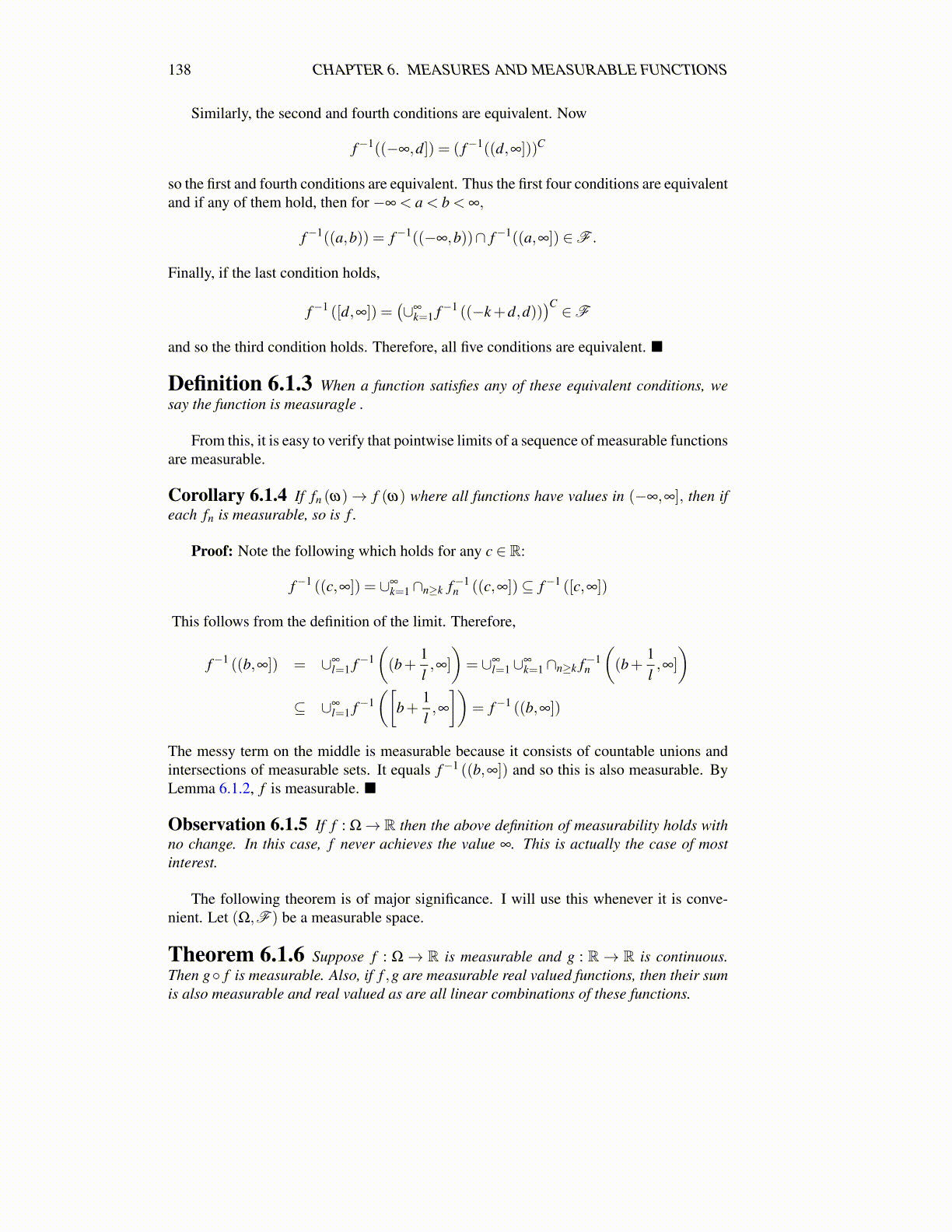
138 CHAPTER 6. MEASURES AND MEASURABLE FUNCTIONS
Similarly, the second and fourth conditions are equivalent. Now
f−1((−∞,d]) = ( f−1((d,∞]))C
so the first and fourth conditions are equivalent. Thus the first four conditions are equivalentand if any of them hold, then for −∞ < a < b < ∞,
f−1((a,b)) = f−1((−∞,b))∩ f−1((a,∞]) ∈F .
Finally, if the last condition holds,
f−1 ([d,∞]) =(∪∞
k=1 f−1 ((−k+d,d)))C ∈F
and so the third condition holds. Therefore, all five conditions are equivalent. ■
Definition 6.1.3 When a function satisfies any of these equivalent conditions, wesay the function is measuragle .
From this, it is easy to verify that pointwise limits of a sequence of measurable functionsare measurable.
Corollary 6.1.4 If fn (ω)→ f (ω) where all functions have values in (−∞,∞], then ifeach fn is measurable, so is f .
Proof: Note the following which holds for any c ∈ R:
f−1 ((c,∞]) = ∪∞k=1∩n≥k f−1
n ((c,∞])⊆ f−1 ([c,∞])
This follows from the definition of the limit. Therefore,
f−1 ((b,∞]) = ∪∞l=1 f−1
((b+
1l,∞]
)= ∪∞
l=1∪∞k=1∩n≥k f−1
n
((b+
1l,∞]
)⊆ ∪∞
l=1 f−1([
b+1l,∞
])= f−1 ((b,∞])
The messy term on the middle is measurable because it consists of countable unions andintersections of measurable sets. It equals f−1 ((b,∞]) and so this is also measurable. ByLemma 6.1.2, f is measurable. ■
Observation 6.1.5 If f : Ω→ R then the above definition of measurability holds withno change. In this case, f never achieves the value ∞. This is actually the case of mostinterest.
The following theorem is of major significance. I will use this whenever it is conve-nient. Let (Ω,F ) be a measurable space.
Theorem 6.1.6 Suppose f : Ω→ R is measurable and g : R→ R is continuous.Then g◦ f is measurable. Also, if f ,g are measurable real valued functions, then their sumis also measurable and real valued as are all linear combinations of these functions.